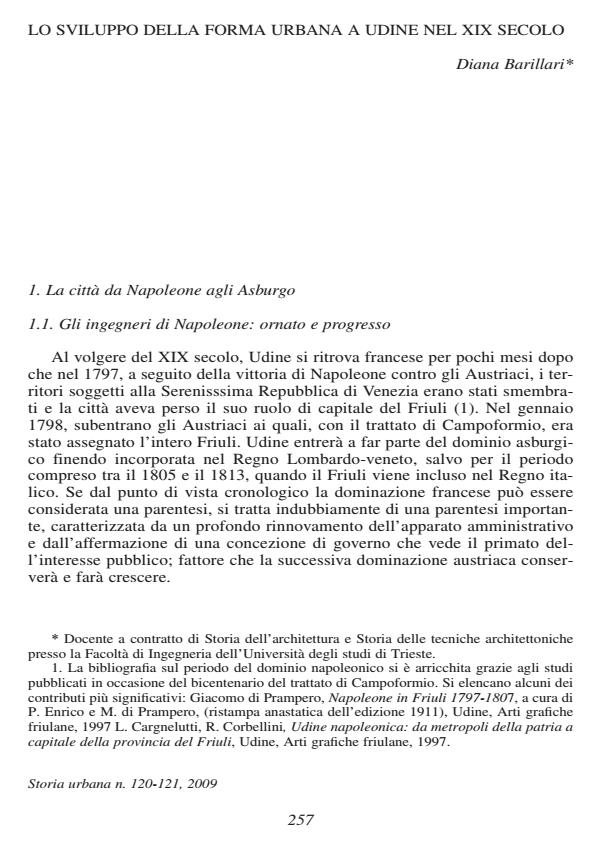Lo sviluppo della forma urbana a Udine nel XIX secolo
Journal title STORIA URBANA
Author/s Diana Barillari
Publishing Year 2009 Issue 2008/120 Language Italian
Pages 26 P. 257-282 File size 4942 KB
DOI 10.3280/SU2008-120012
DOI is like a bar code for intellectual property: to have more infomation
click here
Below, you can see the article first page
If you want to buy this article in PDF format, you can do it, following the instructions to buy download credits

FrancoAngeli is member of Publishers International Linking Association, Inc (PILA), a not-for-profit association which run the CrossRef service enabling links to and from online scholarly content.
The Development of Nineteenth-Century - Udine into a Structured City Udine, the capital of Friuli, as well as the whole region, was introduced to a number of innovations, such as the cadastre, under French rule from 1805 to 1813. Such kinds of innovations were continued by the subsequent Austrian and the Italian royal governments (after the annexation of Friuli in 1866). The city plans of 1878 and 1880 aimed at regulating urban development after the demolition of the city walls. No overall city planning was adopted. Instead, local authorities tended to focus on political concerns that led them to deal with each specific situation separately. The choices made in Udine were in line with what was done in many more Italian and European cities at the time. These illustrate that urban planning was then generally a matter of sanitation rather than of architecture. Architecture came to the fore only at a later stage in the plan of 1899. The minutes of the town council meetings testify to the clash between private and public interests, especially around the issue of expropriation. In addition, they illustrate that developers making up a new class were strengthening their influence and that their interests were bound to modify the appearance of the city.
Diana Barillari, Lo sviluppo della forma urbana a Udine nel XIX secolo in "STORIA URBANA " 120/2008, pp 257-282, DOI: 10.3280/SU2008-120012